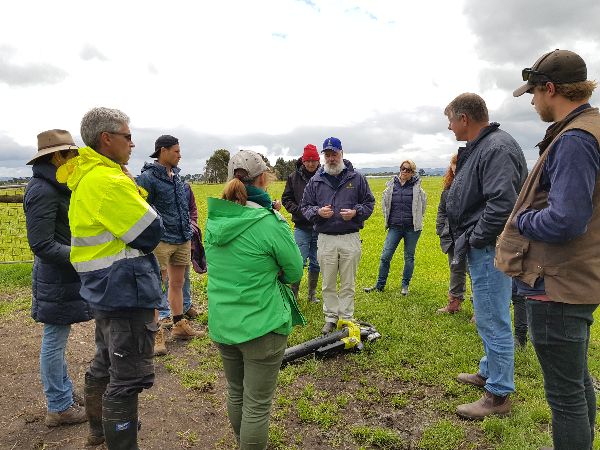Preying on pesky pasture pests

The aim of the project was to improve pasture management practices so graziers are less reliant on chemical options as the go-to strategy for managing pasture pests. Image Supplied
Throughout 2019-20, the Port Phillip and Westernport Catchment Management Authority delivered a one-year pilot project that provided farmers with information on implementing an Integrated Pest Management strategy (IPM) in their pasture systems.
The aim of the project was to improve pasture management practices so graziers are less reliant on chemical options as the go-to strategy for managing pasture pests.
This was done through educational events with a local farmer discussion group and a demonstration site set up and monitored to trial a new IPM approach for pastures that reduced pest numbers whilst minimising impacts to beneficial insects.
The project was funded through Ripe For Change (delivered through Sustainable Table) and delivered in partnership with Western Port Catchment Landcare Network’s Smart Farming for Western Port project.
The trial involved using a specific sowing sequence for renovating a pasture. Pests such as the reg-legged earth mite and lucerne flea target broadleaf species, depleting their nutrients and therefore reducing the nutrients available to grazing livestock.
The trial’s assumption was to sow a pasture mix that is less susceptible to pests first, then once it was established, direct drill and add seeds during a second pass (appx 6 months after depending on the crop and season).
This meant the seeds have a greater chance at the cotyledon stage as the invertebrates that feed on this early leaf stage have effectively been starved out. Broadleaf species such as clovers are more likely to flourish and chemical intervention is less likely.
The early results show that this technique can contribute to reducing pasture pests, reduce the need for chemical control and encourage beneficial invertebrates. However as this was a 12 month project, the result are only preliminary and more trials and monitoring is needed.
A short video of the demonstration site is available here.
A field guide for pasture pests and predators and a full case study will be available on the PPWCMA website.



